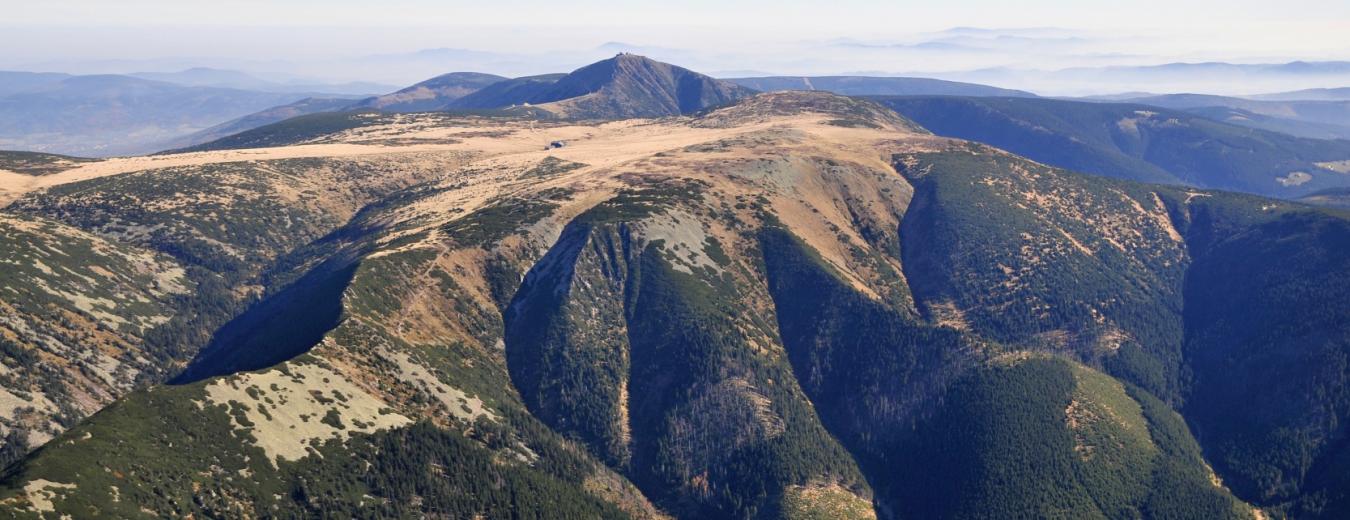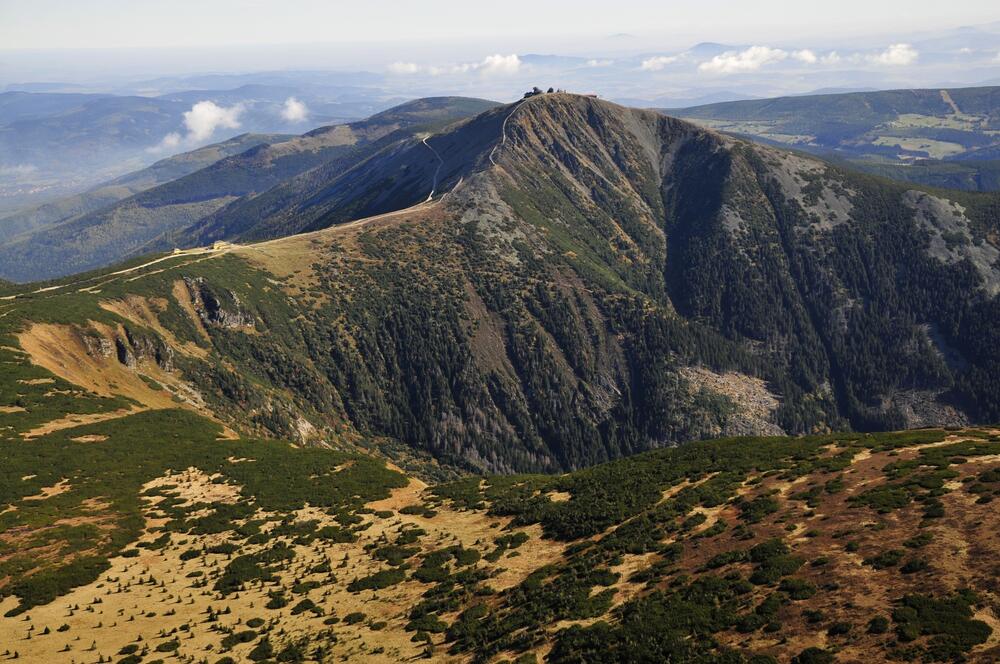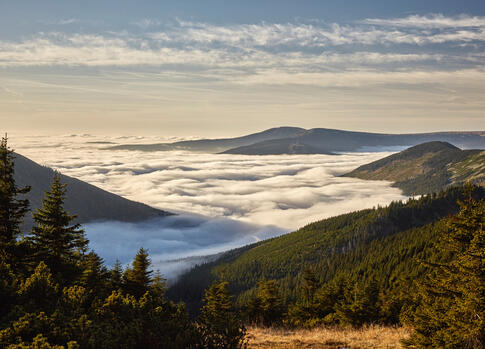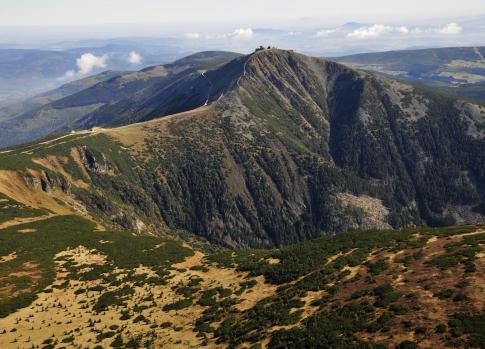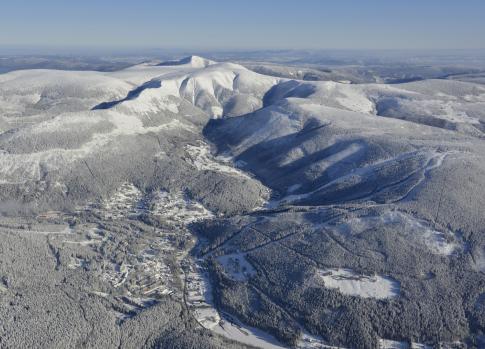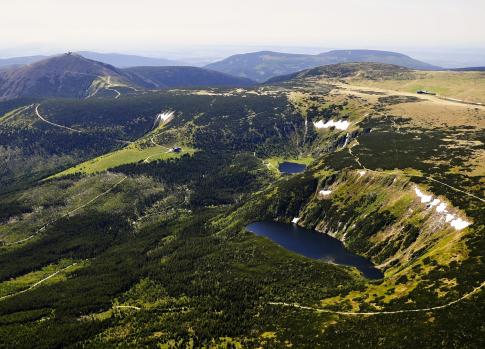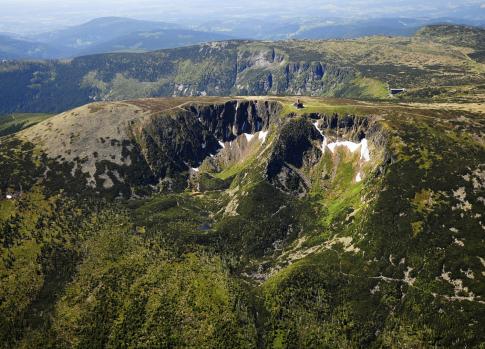Geology and geomorphology
The Krkonose is mostly made up of crystalline schists, ranging in age from Proterozoic to early Paleozoic; altered mica schists, phyllites and orthogneiss are only rarely replaced with quartzites and basic volcanic rocks or crystallic limestone. During the Variscian orogenesis, the former crystalline rocks were intruded by a large central mass of granite massif (pluton) which formed the base for today’s main ridge. Numerous ore deposits originate at the time of geological alterations. During the hot climatic period, the Krkonose ridges were quickly rounded. The last uplift of the mountain unit occurred in the middle of the Tertiary, during the Saxonian tectonics, as a response to Alpine orogenesis in the Alps and the Carpathians. Today’s relief can be seen as a block upland with the relics of grading in the head sides. The late Quaternary glacier modelling gave rise to the typical U-shaped valleys. Their closures are referred to as corries, or pits (for instance, Upska jama, Kotelni jamy), and are extraordinarily interesting from the viewpoint of hydrology, botany, zoology, geology and geomorphology. Thanks to the periodical thawing and freezing of the scree, very peculiar surface formations can be seen in the highest areas of the Krkonose which are normally encountered in the far north and are referred to as tors (Muzske kameny), together with rock grades, cryoplanation terraces (around Lucni and Studnicni mountains), stone rings (regular polygons made up of stones in the highest mountain areas) or kerf soils (on mild slopes).

